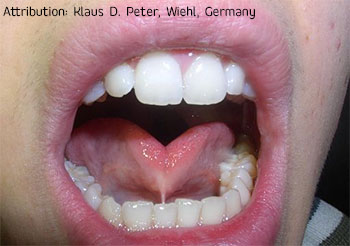
A frenum is the thin band of tissue that attaches the lip to the gums. There are several frenum attachments in your mouth, the three important locations being the front upper and lower lips, between the two front teeth and the attachment of the tongue to the floor of the mouth. The frenum can lead to issues with the spacing of the teeth and even speech problems in some cases.
Maxillary Frenum
This frenum is connected between the two upper front teeth. If the frenum is low, it will likely cause a gap between the two front teeth because the tissue is fibrous, and the teeth can’t close in around it. This frenum can easily tear in young children during mild trauma such as falls or bumps, and although a dentist should assess it if it happens, it is usually not a problem and may be beneficial for the future.
Mandibular Frenum
This frenum attaches to the lower lip between the lower front two teeth. If it is too large, it may cause issues such as gum recession or MAG (minimally attached gingiva) with the lower front teeth.
What is a Frenectomy?
A frenectomy is the removal of a portion of the frenum to prevent issues from occurring with the gums and allow the two front teeth to close together. There are several ways a frenectomy is performed. It can be cut with a scalpel and sutured or cut with a laser. Once the frenum tissue is removed, the two front teeth have a greater chance of closing in and staying together.
Lingual Frenum
This is a frenum on the inside of the mouth that connects the tongue to the floor of the mouth. The lingual frenum can sometimes be too tight or attach too high, just like the maxillary frenum. A large lingual frenum can result in problems with speech and eating and therefore, should be reduced in the same with the maxillary frenum gets reduced. A frenectomy can contribute to a greater quality of life.
